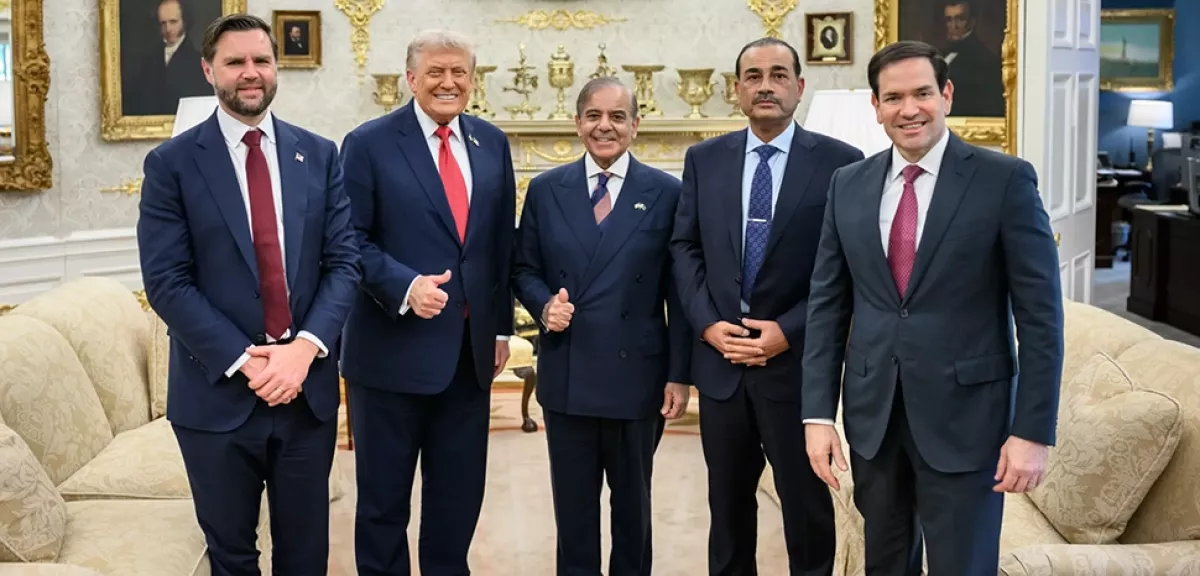How Islamabad, Washington are redrawing South Asian geopolitics
The US–Pakistan relationship appears to be entering a new era after years plagued by mistrust, as both nations rediscover shared interests in energy, technology, and critical minerals. For the first time in decades, Washington and Islamabad seem to be constructing something that goes beyond transactional ties — a partnership meant to outlast crisis cycles.
This renewed engagement was symbolised by Prime Minister Shehbaz Sharif and Army Chief General Asim Munir’s meetings in late September with President Donald Trump. According to a Geopolitical Monitor analysis of the countries’ evolving relations, the shift underscores Pakistan’s return to Washington’s strategic radar after nearly ten years of relative disengagement.
For decades, the relationship between the United States and Pakistan oscillated between cooperation and confrontation. Yet, this time, analysts say the tone feels different. Washington now sees Islamabad not merely as a security-dependent state, but as a potential economic partner in its push to reconfigure global supply chains.

A major turning point came when US Strategic Metals (USSM) pledged $500 million toward Pakistan’s critical mineral sector — one of the largest US industrial commitments to the country in recent memory. The memorandum of understanding (MoU), signed in early September, focuses on exploring and processing rare earths, copper, and lithium — essential materials for electric vehicles and defence manufacturing.
Weeks later, Pakistan sent its first shipment of rare earth elements to the United States, signaling a move from diplomatic discussion to tangible trade. Reports indicate that both countries are now exploring trade and investment frameworks, including potential tariff reductions and incentives for US firms in Pakistan’s mining and tech industries.
Turning resources into geopolitical power
For Islamabad, the minerals deal represents far more than an export opportunity — it is a geopolitical statement. By positioning itself as an emerging supplier of critical minerals, Pakistan is asserting influence in one of the world’s most strategic and competitive sectors.
The country holds vast, largely untapped reserves of copper, gold, and rare earth elements that could transform its global role. As the United States seeks to reduce dependence on China, which currently controls around 70% of global rare earth processing, Pakistan presents an alternative supply route linking South and Central Asia to Western markets.
The exchange is clear: the US gains diversification, while Pakistan gains investment, recognition, and leverage. For Islamabad, the development carries deep symbolism — a return to regional relevance after years of marginalisation in South Asia’s strategic landscape.
Neighbourhood packed with intersecting strategic interests
This diplomatic revival, however, does not occur in isolation. China, Pakistan’s long-standing ally, is watching closely. With over $60 billion invested through the Belt and Road Initiative, Beijing has deep economic roots in Pakistan. Now, US capital and mining interests are entering the same space. Yet Islamabad’s goal appears to be diversification, not replacement — using both Chinese infrastructure and Western financing to stabilise its fragile economy.
For India, the author argues, the shift is less welcome. After years of enjoying Washington’s near-exclusive strategic attention through the Indo-Pacific strategy and the Quad alliance, New Delhi now faces a recalibrated US approach that once again includes Pakistan. Analysts note that this signals Washington’s willingness to “look beyond India” in its regional balancing efforts, particularly after the diplomatic fallout from Operation Sindoor.
Meanwhile, Afghanistan, endowed with lithium and copper deposits, could play a pivotal role in this emerging mineral corridor — either as a cooperative partner, complementing Pakistan’s resources, or as a source of competition, depending on the Taliban’s political behaviour.
In the Gulf, the renewed US–Pakistan relationship aligns with Saudi Arabia and the UAE’s growing partnerships with Islamabad. Studies by Deloitte and S&P Global Market Intelligence suggest Gulf sovereign wealth funds are increasingly targeting mining and extractive industries in Asia — potentially paving the way for joint investments with American firms in Pakistan’s mineral sector.
Riyadh’s Strategic Mutual Defence Agreement (SMDA) with Islamabad further supports Washington’s interest in establishing secure energy and mineral corridors across the Arabian Sea. This could evolve into a triangular economic corridor linking US technology, Gulf capital, and Pakistani resources.
To the north, Central Asian states such as Kazakhstan and Uzbekistan are exploring ways to export through Pakistan’s ports — reviving long-dormant trade routes reminiscent of the Silk Road era.
However, the article cautions that this opportunity also carries risks with it. Pakistan’s key mining zones, particularly in the Balochistan region, where separatist sentiment is periodically expressed through violent attacks, remain volatile, with periodic unrest and weak infrastructure. Political instability and regulatory uncertainty could also discourage foreign investors.
The persistent trust deficit that has long defined US–Pakistan ties also has to be taken into consideration moving forward. The current minerals MoU, the article therefore argues, will serve as “a trial run for rebuilding trust after decades of broken promises and political friction.”
By Nazrin Sadigova








